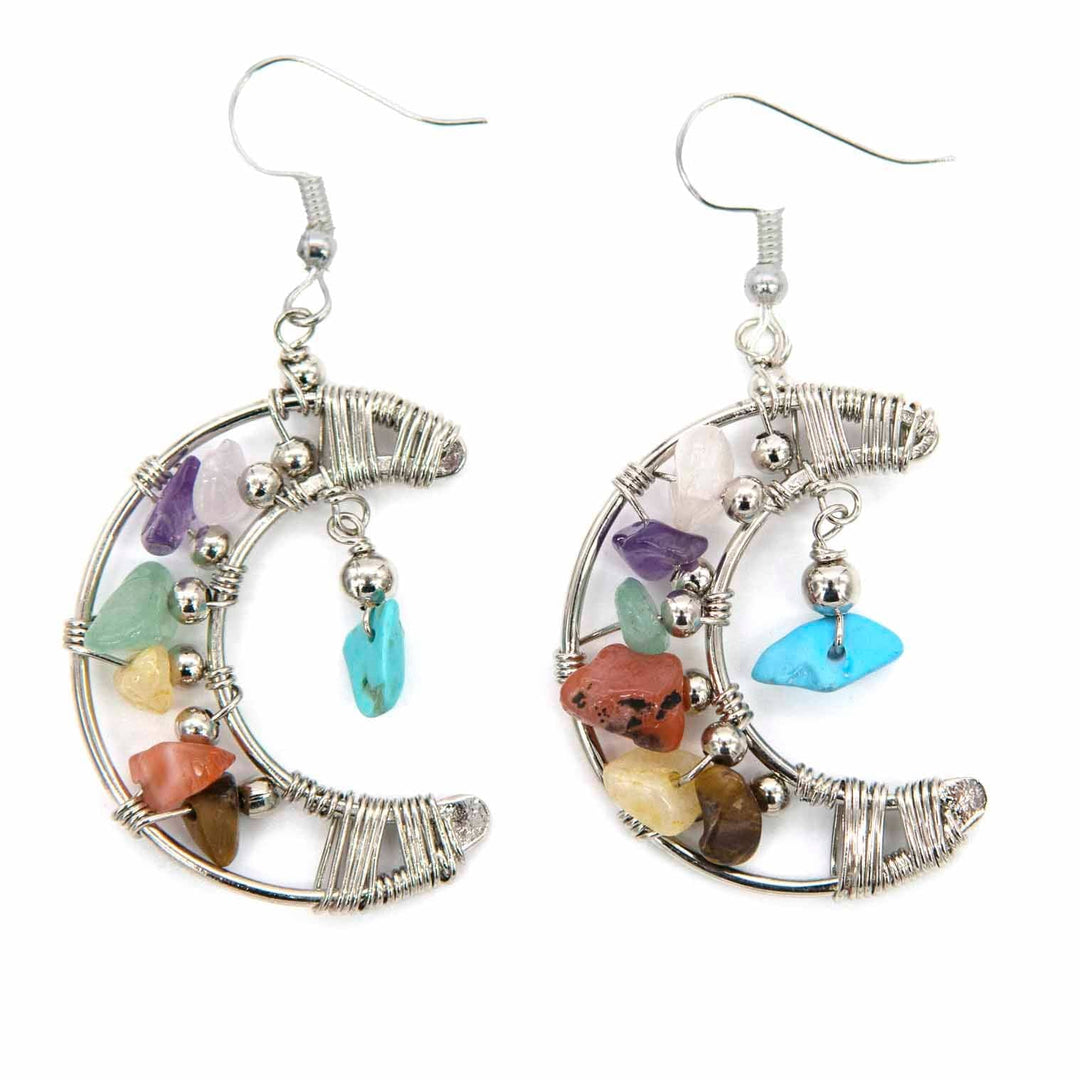The Remarkable History Of Harem Pants

Image credit: etsy.com
I sometimes wonder what it would be like watching the world change from the outside, seeing cultures and beliefs slowly starting to merge and co-exist. Throughout history to the present day events and situations are leading towards a united world, towards being one large melting pot for diversity, culture, fashion, and the creative arts.
A prime example of this would be the ever growing popularity of the Marmite-esq (you either love them or hate them) Harem Pants. The very history of these trousers and their recent comeback is a perfect example of how something once used to conceal and de-sexualise women is now used as a form of expression against the very purpose it was created for.
Where did harem pants originate from?
The origin of Harem Pants (or Trousers for those who prefer this term) goes back almost 2,000 years. Harem Pants are believed to originate from the dress-like tunic called Dhoti, worn as a traditional men’s garment in the eastern world.
The traditional Dhoti, from which Harem Pants were born:

Image credit: inficentre.blogspot.co.uk
“The dhoti also known as pancha, mardani or veshti is a traditional men's garment worn in India, Pakistan, Bangladesh and Nepal. It is a rectangular piece of unstitched cloth, usually around 4.5 metres (15 ft) long, wrapped around the waist and the legs and knotted at the waist, resembling a long skirt."
- en.wikipedia.org/wiki/Dhoti
Over many years this garment went through design variations and eventually became the first versions of the tulip shaped trousers that can be seen today. The design however, was not the only change. Once specifically for men these baggy trousers eventually would start to be worn by women, but for alternative reasons.
What are harem pants? Columnist Megan Wright explains:
“First seen in Persia 2,000 years ago, the pants were worn by women among different middle-eastern tribes to represent modesty and innocence (Henderson). This can be seen through the style and design of the pants: they are loose around the hips and legs, diminishing any trace of a feminine body shape. The trousers were a symbol of the Muslim women’s role as a “patriarchal property and ‘underdeveloped’ personality, also seen in the loose fit of the pants (Nguyen). Men and other family members wore the pants when doing chores at home., as their baggy fit allowed them to comfortably complete these tasks.
Why are they called harem pants?
Salvars and Shalwar are a few of the commonly used names for the pants during this time period. An essential part of everyday life, the Persian word “Salvar” actually means “pants” (Henderson). Obviously, the pants meant much more than a stylistic choice during this time period.”
- theevolutionofharempants.weebly.com
The early styles of Harem Pants made their way into Western culture in the mid 1800’s by a women’s rights activist named Amelia Bloomer. Yes, as her surname suggests she was indeed the lady we can thank for what would become the infamous “Bloomers”. She took Harem Pants and used them as a uniform for Feminists who wanted to fight for their rights; these trousers would represent freedom and liberation with their higher hemlines and masculine connotations.
And here are Amelia Bloomer's Bloomers on show:

Image credit: kickshawproductions.com
Popular Feminists at the time, enjoying a similar level of fame as today’s celebrities, not only promoted the use of these trousers but made them more controversial.
“The pants served as a uniform for the persevering women, illustrating the gender boundaries they intended to break: pants had not been worn by women in public before this time period. The women wore the pants with purpose, not with style. Post-suffragist days, however, the pants seemed to fall under the radar when the women earned the right to vote.”
- Megan Wright
Although these new trousers would offer more comfort then the corsets and petticoats commonly worn at the time, Amelia failed to convince the majority of women that they should hang up their old clothes for the exotic new alternatives on offer. The popularity of Harem Pants once again diminished, but like a dodgy “Rocky” sequel, these eastern trousers would not just sit on the canvas; they would find a way to fight back!
In 1909 a French Fashion designer named Paul Poiret created a collection of clothes which included both Oriental and Persian influences for American and Western culture. This collection would feature garments such as Kaftans, Head Dresses, and a new wave of Harem Pants.
These new designs were more feminine, made from silks and satin materials. Embroidery and intricate beading was also introduced to add a softer more oriental touch. Paul Poiret showed that for a more feminine Eastern feel these trousers could be flaunted with the accompaniment of Tunics and Waist Wraps.
“Women began dressing in the pants as they were expanding their traditional apparel boundaries and wearing what was considered “provocative” clothing. Trousers, traditionally worn in Western culture by men, were a bold new statement in gender identity for these turn-of-the-century women. By wearing these pants, women were intentionally dressing like men, and therefore associating themselves with male power and privilege.”
- (Fischer 112)

Image credit: glamourdaze.com
As before, this new trend carried on for a while but once again started to lose popularity in the Western world. Its next revival however would see its popularity soar to much loftier heights.
Harem Pants started to reappear in the 1960’s and into the 70’s, but it’s the 80’s that saw them for the first time launch into the main stream consciousness.
Their reprisal was catapulted by the hip hop music video “You can’t touch this!” The video featured the rapper “MC Hammer” dancing around in a pair of, what were eventually nicknamed, “Parachute Pants” or “Hammer Pants”; a design which saw the baggier top half as true to the original Harem Pants but with the slight variation of a skinnier jean fit around the lower leg. The benefits of this design were not only that it saved on material, but it allowed the wearer freedom of movement whilst creating a zany look.
http://www.youtube.com/watch?v=otCpCn0l4WoJust as it seemed the popularity of Harem Pants was once more diminishing Ralph Lauren in 2009 released his spring collection, which re-established the possibilities for designers. Just as the popular Feminists had done previously with the bloomers in the 1800’s, modern celebrities were to be key in promoting and showcasing the many variations of Harem Pants through the years, all the way to the present day.
A prime example of celebrity Harem endorsement is Justin Bieber’s now infamous shiny red Harem Pants. The young pop sensation Justin Bieber came out on stage wearing a red pair of Harem Pants, which seemed to receive more publicity and coverage then Justin himself. They’ve now become a part of the singer’s image, just like with MC Hammer previously. If you ask someone what they know about Justin Bieber you’ll probably get the same answers, the hair, the attitude, the inability to sing, and of course his Harem Pants. This is the power of using the celeb media to catwalk modern fashion.
http://www.youtube.com/watch?v=Qy5g32gSjboToday Harem Pants can be seen anywhere from the big screen, to the local Yoga centre. They’ve lost their political stigma, become unisex, and are enjoyed by many for not only for their fashionable uniqueness but also for their functionality.
Harem pants how to wear?
Harem Pants are loose and comfortable, offering almost total freedom of movement, which gives them an advantage over more conventional clothes such as jeans or skirts. They are great for wearing in and out of the house, ideal for hobbies and sports such as belly dancing or weight lifting, and are perfect for simply sitting down on the couch and relaxing with a nice drink.
With so many different style variations now available, Harem Pants can be employed to great effect for anything from the smart & sexy look, to the more off-beat Avant-garde style.
With their ability to easily lend such uniqueness to an outfit, it’s easy to see why modern fashion designers are continuing to jump on the creative bandwagon to continually evolve these once plain garments.
Interested in buying a pair for Harem Pants yourself? Feel free to check out our range
Blog Updated 20/07/2018








